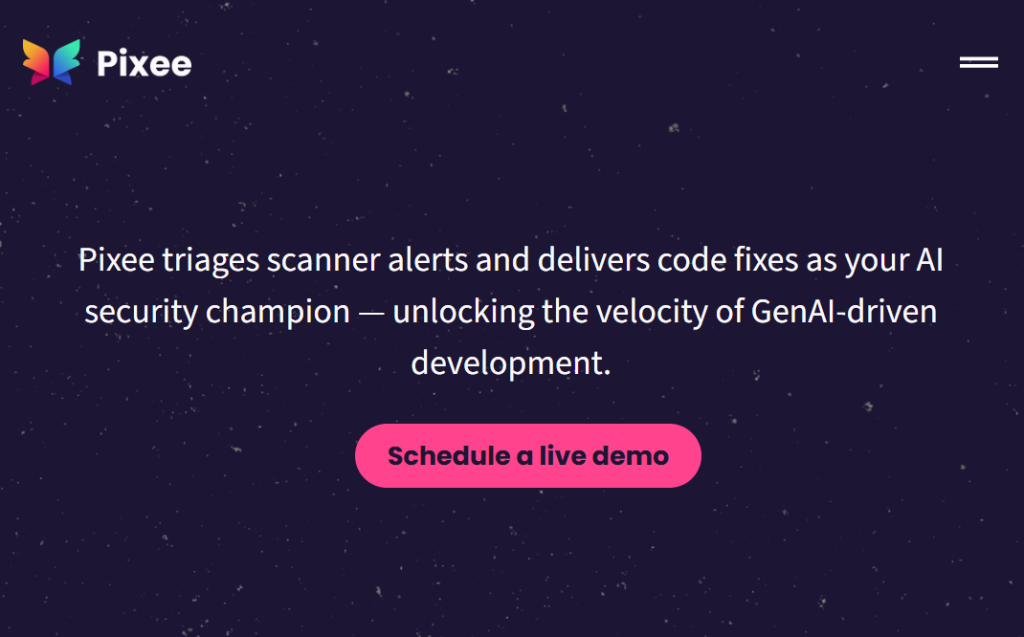Pixee Raises $15M Seed Round to Revolutionize Software Supply Chain Intelligence
July 11, 2025
byFenoms Start-Ups

In a significant milestone for the future of software security and developer infrastructure, Pixee has closed a $15 million seed round led by Decibel Partners and Wing Venture Capital. The round also drew support from TEDCO, PrimeSet, GitHub engineer Zach Holman, Alex Rice, Brian Chess, and other notable angels.
Founded by Surag P., Pixee is taking on one of the most overlooked, yet critical, pain points in modern software development: understanding and managing the sprawl of third-party dependencies across the entire software supply chain.
The Modern Stack is a Black Box
As engineering teams have grown more distributed and increasingly reliant on open-source libraries and third-party code, most organizations now operate on stacks with tens of thousands of transitive dependencies — many of which are pulled in automatically and without scrutiny.
Pixee is building real-time visibility infrastructure for software dependency chains, enabling engineering teams and security teams to:
- Automatically map dependencies across all repositories
- Detect risks before they hit production
- Understand component relationships across the entire SDLC
- Prevent issues like outdated libraries, vulnerable packages, or opaque license obligations
This isn’t just about shift-left security or SCA (software composition analysis). Pixee’s mission is broader — they want to help companies treat software supply chain observability as a first-class engineering concern, not a reactive checklist.
Why This Round Matters
The seed round was designed not just to fund hiring or GTM, but to validate an entire new category: developer-native software supply chain intelligence.
In the words of one investor:
“Pixee isn’t just monitoring for threats — they’re architecting transparency into modern codebases. This is a foundational shift for how software is built and trusted at scale.”
This vision aligns with where the industry is heading. After the SolarWinds breach, Log4Shell, and CircleCI compromise, boardrooms now understand the urgency of software supply chain integrity.
And the current state of tooling is broken. Security scanners throw false positives. SAST tools are reactive. Dependency graphs are hard to maintain. Pixee is tackling this with a developer-first approach — embedded directly into version control and workflows devs already use.
Engineering Insight: What Founders Should Really Be Tracking
Here’s something few founders are doing but should: build a real-time map of your entire software dependency graph from day one — even at seed stage.
You might not need compliance audits or SOC2 reports yet, but understanding what your product relies on — and what those dependencies rely on — will:
- Save hundreds of hours later during enterprise procurement
- De-risk hiring decisions around sensitive modules
- Avoid costly rewrites due to license or versioning issues
- Help you detect silent issues like maintenance abandonment
Pixee’s own early traction came from startups who thought they didn’t need it yet — until an investor or big client asked for a dependency audit, or they faced a sudden open-source bug fire.
Startups think infra maturity comes later. The best ones build observability from Day 1.
Market Signals: Why Investors Are Betting on Supply Chain Intelligence
With incidents like Log4Shell, SolarWinds, and CircleCI, there’s now broad consensus in the enterprise world that software supply chains are the new attack surface. But the opportunity isn’t just reactive security. It’s proactive intelligence.
Pixee’s long-term play is to become the “Datadog of dependencies.” By ingesting and analyzing how code components evolve, interact, and degrade across environments, they can help teams:
- Predict breakage before it hits production
- Forecast the impact of upgrades
- Surface unused or unmaintained packages
- Flag suspicious or overly-permissive libraries
This is less about ticking a compliance box — and more about helping engineering leaders build operational clarity into how software is assembled.
The market timing couldn’t be better. The software supply chain security segment is growing fast:
- The global SCA (Software Composition Analysis) market is projected to grow from $398 million in 2021 to $1.2 billion by 2026 at a CAGR of 25.5% (source: MarketsandMarkets).
- According to GitHub’s Octoverse report, 94% of codebases include open-source components, and on average, 78% of those dependencies are indirect.
- Gartner predicts that by 2026, 60% of enterprises will require SBOMs (Software Bills of Materials) from their vendors — making dependency visibility a contractual requirement, not just a nice-to-have.
Pixee’s Developer-First Model
What sets Pixee apart isn’t just its tech — it’s how they go to market.
Instead of building compliance-heavy tools for CISOs, Pixee is going after the developer as the buyer. Their integrations live inside GitHub, GitLab, Bitbucket, and CI/CD pipelines — offering value before security teams even ask for it.
This bottom-up motion mirrors the success stories of companies like:
- Snyk (now valued over $7B)
- Semgrep
- Replit
- Sourcegraph
And it makes sense. Developers are now the gatekeepers of software infrastructure budgets. When you win the hearts and minds of builders, you win the market.
A Big Vision With Deep Roots
Founder Surag P. brings deep experience from the intersection of developer experience and cybersecurity. Before Pixee, he led engineering at devtool-first orgs and felt firsthand the pain of scaling codebases without centralized visibility.
The early team includes alums from GitHub, Okta, and Snyk — people who have shipped infrastructure for developers at scale.
That DNA shows in the product design: lightweight, fast to install, and actionable from Day 1.
What’s Next for Pixee?
With this $15M raise, Pixee plans to:
- Expand integrations into more languages and CI/CD platforms
- Build out auto-remediation tooling for high-risk packages
- Offer an enterprise-ready API for security and compliance automation
- Continue open-source contributions to SBOM and supply chain standards
The team is also exploring new ways to visualize “blast radius” — showing how a single dependency affects not just one service, but entire fleets of microservices across orgs.









